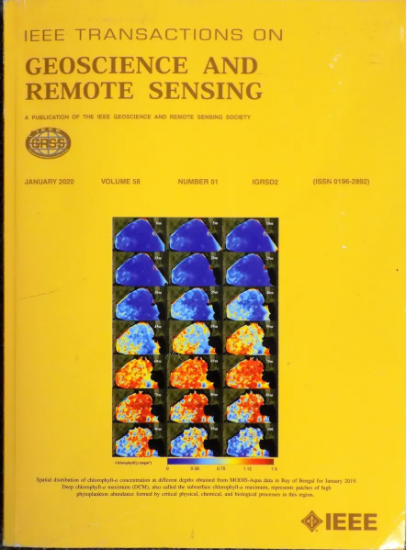Modeling Top-of-Atmosphere Anisotropic Reflectance of Discrete Forests Over Sloped Surface
IF 7.5
1区 地球科学
Q1 ENGINEERING, ELECTRICAL & ELECTRONIC
IEEE Transactions on Geoscience and Remote Sensing
Pub Date : 2025-04-18
DOI:10.1109/TGRS.2025.3557557
引用次数: 0
Abstract
Characterizing the anisotropic features at the top of atmosphere (TOA) is crucial for vegetation monitoring and retrieval of biophysical parameters. The core challenge lies in modeling the mutual interactions between land surface and atmosphere, particularly in the context of rugged terrains and cloudy conditions. The GOSAILTA is proposed to extend the top-of-canopy (TOC) anisotropic reflectance geometric optical and mutual shadowing and scattering-from-arbitrarily-inclined-leaves model coupled with topography (GOSAILT) model to TOA reflectance/radiance by integrating Santa Barbara DISORT atmospheric radiative transfer (SBDART) model. The interactions between atmosphere and land surface are characterized for the effects of the sloped surface and its surrounding terrains under both clear and cloudy conditions. The model was validated against discrete anisotropic radiative transfer (DART) simulations, airborne observations from wide-angle infrared dual-model line/area array scanner (WIDAS), and satellite observations from HJ-1A/B constellation charge-coupled device (CCD). Results demonstrate high overall accuracy in the red band (coefficient of determination (斜坡上离散森林大气顶各向异性反射率模拟
大气顶各向异性特征对植被监测和生物物理参数反演具有重要意义。核心挑战在于模拟地表和大气之间的相互作用,特别是在崎岖地形和多云条件下。GOSAILTA通过整合Santa Barbara DISORT大气辐射传输(SBDART)模型,将冠顶(TOC)各向异性反射率几何光学和任意倾斜叶片耦合地形的相互遮蔽和散射模型(GOSAILT)扩展到TOA反射率/辐射。在晴朗和多云条件下,大气与地表的相互作用主要受坡面及其周围地形的影响。通过离散各向异性辐射传输(DART)仿真、广角红外双模线阵/面阵扫描仪(WIDAS)机载观测和HJ-1A/B星座电荷耦合器件(CCD)卫星观测对模型进行了验证。结果表明,该方法在红色波段具有较高的整体准确度(决定系数($R^{2}$) =0.993;均方根误差(RMSE) =0.008;平均绝对百分比误差(MAPE) =5.481%)和近红外(NIR)波段($R^{2}=0.933$, RMSE =0.025;MAPE =6.227%)。模拟结果与WIDAS和HJ的结果非常吻合,R^{2}$为0.9。然而,云顶反射率的精度略低,R^{2}$和MAPE分别为0.311和14.972%,主要是由于云参数化的限制。
本文章由计算机程序翻译,如有差异,请以英文原文为准。
求助全文
约1分钟内获得全文
求助全文
来源期刊

IEEE Transactions on Geoscience and Remote Sensing
工程技术-地球化学与地球物理
CiteScore
11.50
自引率
28.00%
发文量
1912
审稿时长
4.0 months
期刊介绍:
IEEE Transactions on Geoscience and Remote Sensing (TGRS) is a monthly publication that focuses on the theory, concepts, and techniques of science and engineering as applied to sensing the land, oceans, atmosphere, and space; and the processing, interpretation, and dissemination of this information.
 求助内容:
求助内容: 应助结果提醒方式:
应助结果提醒方式:


